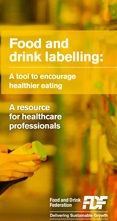Reference Intakes (previously Guideline Daily Amounts)
The term ‘Reference Intake’ (RI) will replace ‘Guideline Daily Amount’ (GDA), however the principles behind how these values are determined remains the same.
RIs (and previously GDAs) are used alongside information companies provide on the nutritional contents of their products. They can help show what contribution a particular product or portion size can make to daily intakes. In this way RIs can help to encourage healthier eating.
The new Reference Intakes (RIs) are values which have been set out in European law. An RI is given for all of the mandatory nutrients (see table below). For simplicity there is only one set of RIs (this is different to GDAs which had several values).
Below are the Reference Intakes which you will see on food labels:
| Energy or nutrient | Reference Intake |
|---|---|
| Energy | 8400kJ / 2000kcal |
| Total fat | 70g |
| Saturates | 20g |
| Carbohydrates | 260g |
| Sugars | 90g |
| Protein | 50g |
| Salt | 6g |
N.B. The RIs for an adult are based on the requirements for an average female with no special dietary requirements and an assumed energy intake of 2000 kcal.
IMPORTANT: This information is a guide only and is not individual advice.
Top Tip
The values for the nutrients provided on the front of pack – fat,
saturates,
sugars, salt – are maximum amounts and not targets to aim for.
Top Tip
Although currently some product labels show GDA information for children,
this is not allowed on labels under the new law.
